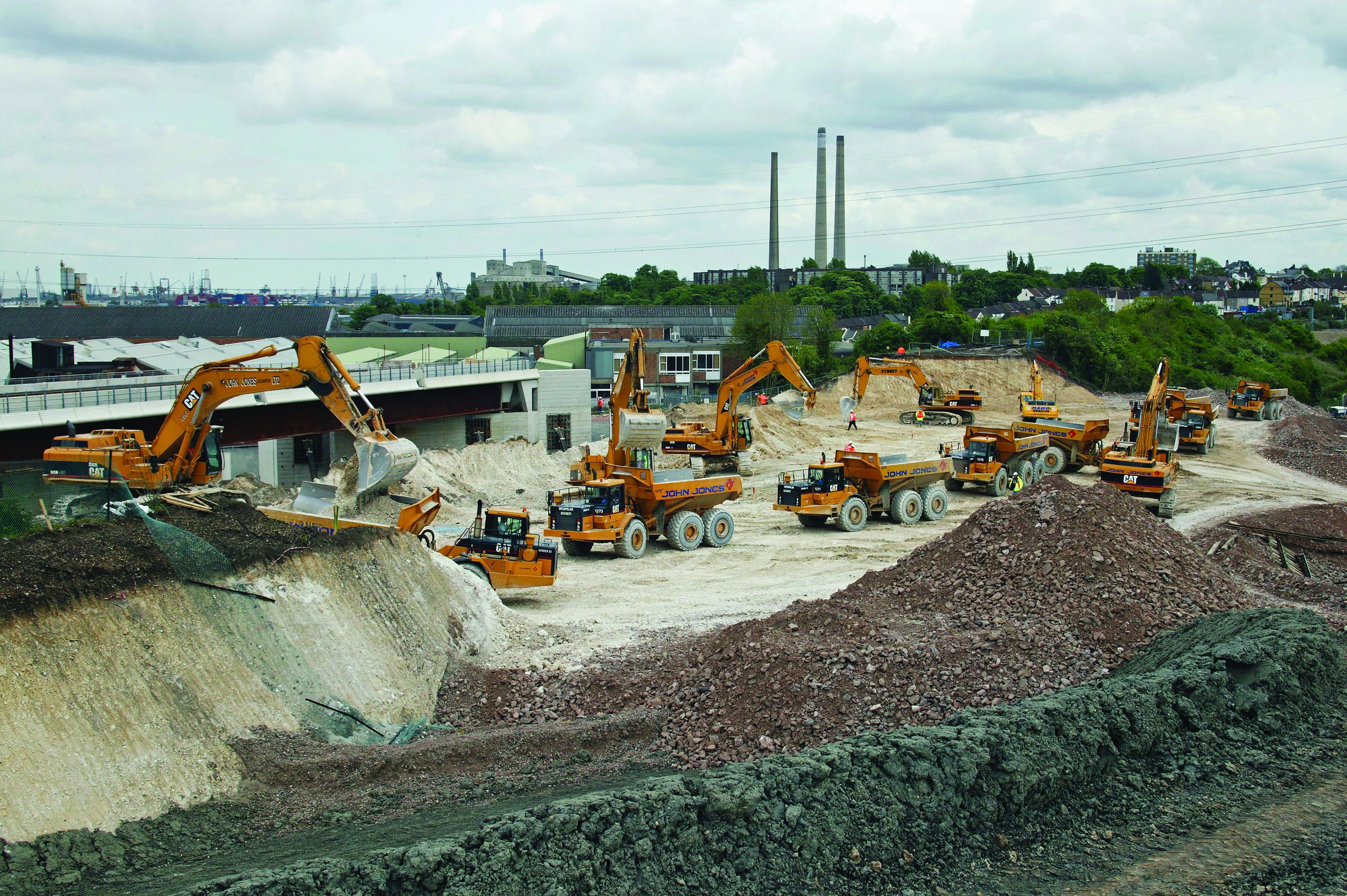Focus on the track support to carry the extra kph of high-speed rail will have to become much sharper, says Mott MacDonald’s head of railway geotechnics Lee Parry. He highlights the issues which could have far-reaching effects on cost and live operations if they are not anticipated and managed during design and construction.
What extra steps are needed to meet the tighter design requirements of high speed rail?
Dynamic compatibility of the whole system – the train, the track, the formation and the subgrade – is critical. As a train progresses, it generates undulating Rayleigh waves in the ground which move ahead of it. Different materials have different Rayleigh wave velocities and, if the train approaches that velocity, vibrations propagate through the track system and the supporting ground.
The effect can be significant and damaging. To understand the likely impact at a specific location, it is important to understand the small-strain stiffness, the dynamic moduli and shear-wave velocity of the ground to depths of 5m.
In a cutting, the issue could be dealt with by over-excavating – replacing the natural subgrade with a better-engineered material. With an embankment, where the instinct would be to re-use material excavated from elsewhere along the route, the top 5m has to be very high quality fill – either granular material or treated cohesive material.
All this brings into play the need for more geophysical and dynamic testing, and perhaps field trials, than would be done for conventional railways. We are looking at the MASW (multi-spectral analysis of surface waves) system and seismic cones to measure how the stiffness of the ground and its dynamic properties vary. MASW involves hitting the soil surface and monitoring the frequencies of the resulting waves which reveal the elastic moduli and thicknesses of soil layers.
This might come as a shock to the ground investigation industry because getting the right kind of ground investigation done, soon enough, is going to be a critical issue. The supply chain will be asked to complete a high quantity of investigations in a compressed time period.
New railways often have to adopt an alignment through areas of variable or disturbed ground. What implications does that have?
The performance criteria for high speed railways are very tight but opportunity for maintenance during operation – to deal with ongoing settlement, for example – are limited. Problems that might generate settlement are weak ground, variations in geology and areas where there have been previous workings. There is a need to avoid sudden deformation which would cause strain within the track. Quite complex transitional arrangements have to be designed and built, which might involve deeper excavations and remedial work – by strengthening, treatment or replacement.
The other issue is heave, which is likely if the line passes through deep cuttings in high plasticity, over-consolidated clays and mudstones. If the heave occurs during construction, it can be dealt with there and then. But it can take 50 years plus to emerge.
Anticipating that can lead to very expensive additional works: perhaps digging out and replacing material from beneath the cutting or installing heave-reducing piles to hold everything in place. To a certain extent, heave can be predicted through desk studies and geological map research. But ground investigation is needed to produce refined studies with accurate quantities and therefore certainty of cost.
Could the lack of maintenance opportunities on a high speed railway push designers into being more conservative?
Potentially yes. For example, slope drainage is often used to enhance cutting stability but it might typically only have a design life of 25 years before it gets clogged-up. The idea of digging material out and installing new pipework does not seem very feasible on a high speed railway.
We are going to have to come up with innovative techniques to make sure we don’t end up with very gentle slopes that take up more land and increase cost.
High speed rail demands much tougher tolerances. Can we comply without driving inefficiencies into the programme?
When we build embankments we normally measure the degree of compaction as each layer is completed. If it meets specification we go on and add another one. With high speed, you need to ensure that the formation at the top has the right stiffness and shear-wave velocity to fit in with the Rayleigh wave picture.
There are ways of measuring this stiffness with plate-bearing tests but they are quite time-consuming and, while one is underway, you can’t continue with building the embankment. That brings cost and programme issues. We need a smart tool that can be used during construction to give confidence that the stiffness will be appropriate.
We’re now seeing earth moving plant fitted with continuous compaction control equipment which measures the dynamic response of the ground as the roller vibrates and puts a load on it. That could have a role to play.
A lot of construction equipment now has GPS, so it is possible to record where a compactor has been working and how many times it has gone over an area. There is a challenge for us as specifiers and for our colleagues in the earth-moving industry to come up with a system which we can move forward with in the field.
Is the geotechnical industry in a position to overcome the challenges of delivering high speed rail?
I am convinced the industry – and certainly Mott MacDonald – can respond well. We learned a great deal through building the UK’s first high speed railway and engineering knowledge, aided by amazing advances in digital hardware and software, has come on quite some way. The key thing is we just mustn’t underestimate the effort that has to be put in from the outset to get the right end result.




